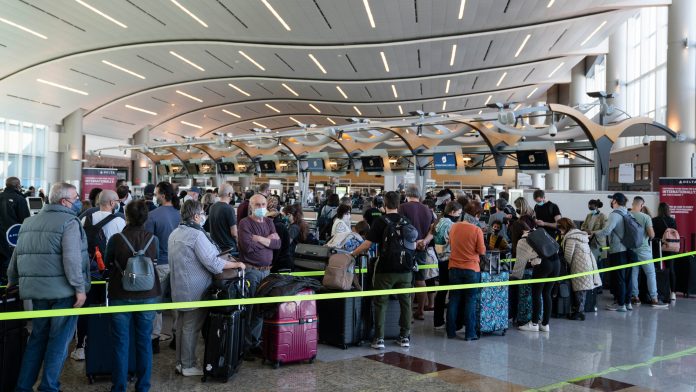CANADA VISA FOR SPANISH CITIZENS and CANADA VISA FOR DANISH CITIZENS
Canada is different from many other countries in that it welcomes immigrants into the country with open arms, making Canada one of the most popular travel destinations for Spanish and Danish citizens. This article will discuss how Canadians can easily apply for Canadian visas according to their nationality.
What is a Canada Visa?
If you are a Spanish citizen or a Danish citizen and you want to visit Canada, you need to apply for a Canada visa. The visa process can be a little complicated, but fortunately there are several options available to you. CANADA VISA FOR SPANISH CITIZENS
The first step is to apply for an electronic travel authorization (ETA). This is an online application that you can complete and submit to the Canadian government. You will need to provide your passport information, as well as your reason for visiting Canada.
Once you have obtained an ETA, the next step is to apply for a temporary resident permit (TRP). This document will allow you stay in Canada for up to six months. To obtain a TRP, you will need to provide proof of your identity, citizenship, and residence in Spain or Denmark. Additionally, you will need to submit evidence of funds worth CAD $10,000 per year or CAD $20,000 if accompanying a family member who is seeking residency in Canada.
If everything goes smoothly and your application is approved, then you can finally apply for a Canada visa. You will need to provide additional documents such as your passport photo page, proof of financial stability, and health insurance coverage. Once all of these documents have been submitted, the Canadian embassy or consulate should be able to issue you a visa confirmation letter.
Types of Canada Visas
There are three types of Canada visas available to Spanish and Danish citizens. These are:
-Temporary Resident Visa (TRV): This is the most common type of visa and is used for people who want to stay in Canada for a specific period of time, usually two months or less. CANADA VISA FOR DANISH CITIZENS
-Permanent Resident Visa (PRV): This is the most permanent type of visa and is used for people who want to live in Canada permanently.
-Canadian Preference Program (CPP): This is a special program for refugees who have been processed by the United Nations High Commissioner for Refugees (UNHCR).
Benefits of a Canada Visa
If you are a Spanish citizen or Danish citizen and you want to visit Canada, you will need a visa. A visa is an entry permit that allows a foreigner to enter Canada for a certain period of time. The requirements for getting a visa vary depending on your nationality.
If you are a Spanish citizen, you will need to apply for a visa at the Canadian embassy or consulate in your home country. You will need to provide proof of your identity and citizenship, as well as proof of your travel document (such as your passport). The application process can take up to several months, so be prepared to wait awhile.
If you are a Danish citizen, you will not need to apply for a visa when travelling to Canada. However, if you plan on staying longer than six months in Canada, you will need to obtain an immigration permit from Canadian authorities. The immigration permit is valid for one year and can be obtained by applying online or in person at any Canadian immigration office.
How to Apply for a Canada Visa
If you are a Spanish citizen or Danish citizen and you want to visit or live in Canada, you need to apply for a Canada visa. There are different types of Canada visas that can be applied for, depending on your nationality and the purpose of your visit.
To apply for a Canada visa, you will need to submit an application form, which can be downloaded from the Canadian government website. You will also need to provide documentation that proves your identity and citizenship, as well as proof of travel plans to Canada. The application fee is C$160 (€130), and the processing time for a visa varies depending on the nationality of the applicant. For Spanish citizens, the processing time is usually around 10 working days. Danish citizens usually have shorter processing times, at around 5 working days.
Types of Canadian Visas
There are three types of Canadian visas that a Spanish citizen or Danish citizen can apply for: a temporary resident visa, a work permit, and a study permit.
A temporary resident visa is the most common type of Canadian visa for Spanish citizens and Danish citizens. This visa allows you to stay in Canada for up to six months and allows you to work and study in Canada.
A work permit is the next most common type of Canadian visa for Spanish citizens and Danish citizens. This permit allows you to work in Canada legally. You must have a job offer from a Canadian employer and be able to meet all the requirements of the job, including having a valid passport and being able to speak English.
A study permit is the least common type of Canadian visa for Spanish citizens and Danish citizens. This permit allows you to study in Canada for up to one year. You must have an offer from a Canadian school or university and be able to meet all the requirements of the course, including having a valid passport and being able to speak English.
Conclusion
If you’re a Spanish citizen or a Danish citizen living in Canada, you may be wondering whether you need a visa to visit Canada. The answer is yes, depending on your nationality and the purpose of your visit. Here’s more information on how to apply for a Canadian visa if you are either a Spanish citizen or Danish citizen:
Spanish citizens who are visiting Canada for tourism purposes only do not need a visa, but Spain does require that tourists have Proof of Residence (ie. A copy of your passport with the stamp “Tourist”).
Danish citizens living in Canada and wishing to travel outside of Quebec must have a valid Canadian tourist card or an International Travel Authorization (ITA) from the Canadian Government.
Please note: If you are travelling to any other provinces other than Quebec, you will also require an entry permit issued by the immigration authorities in that province.






